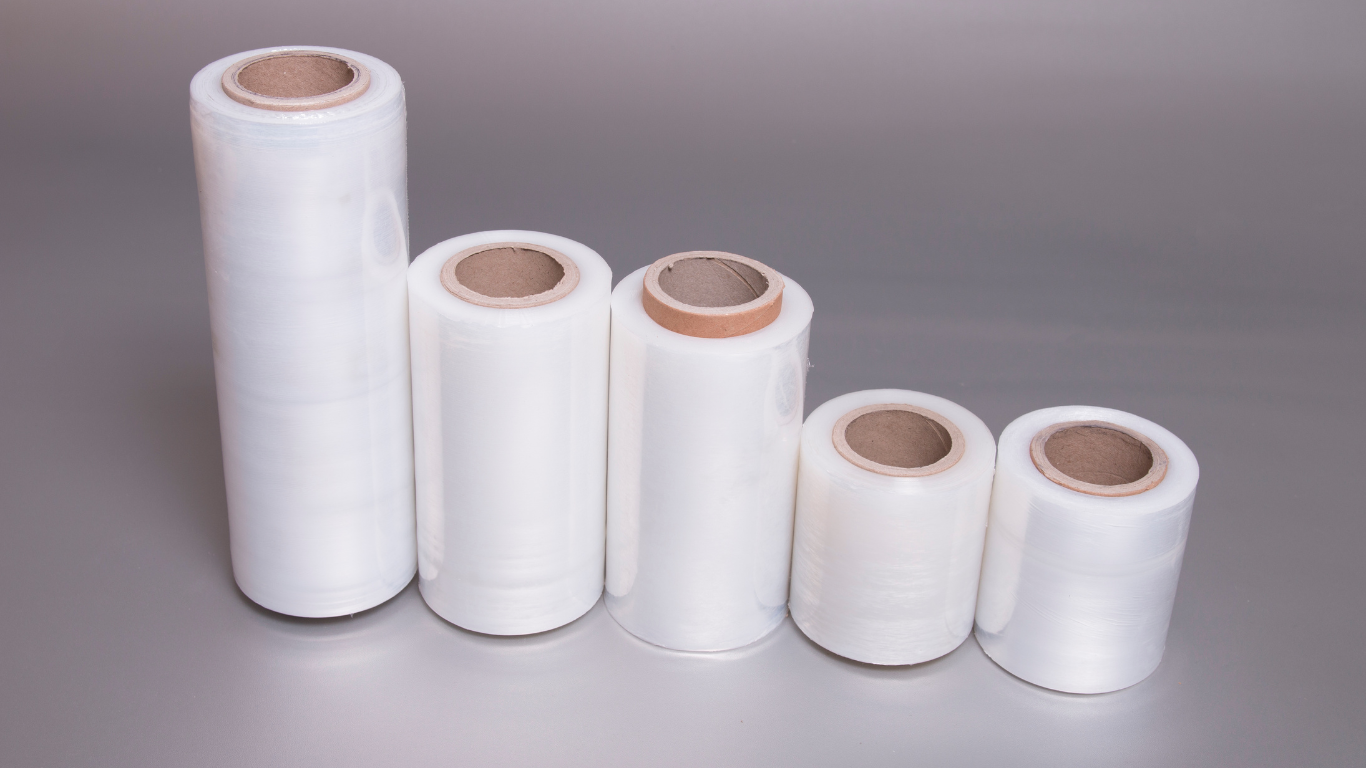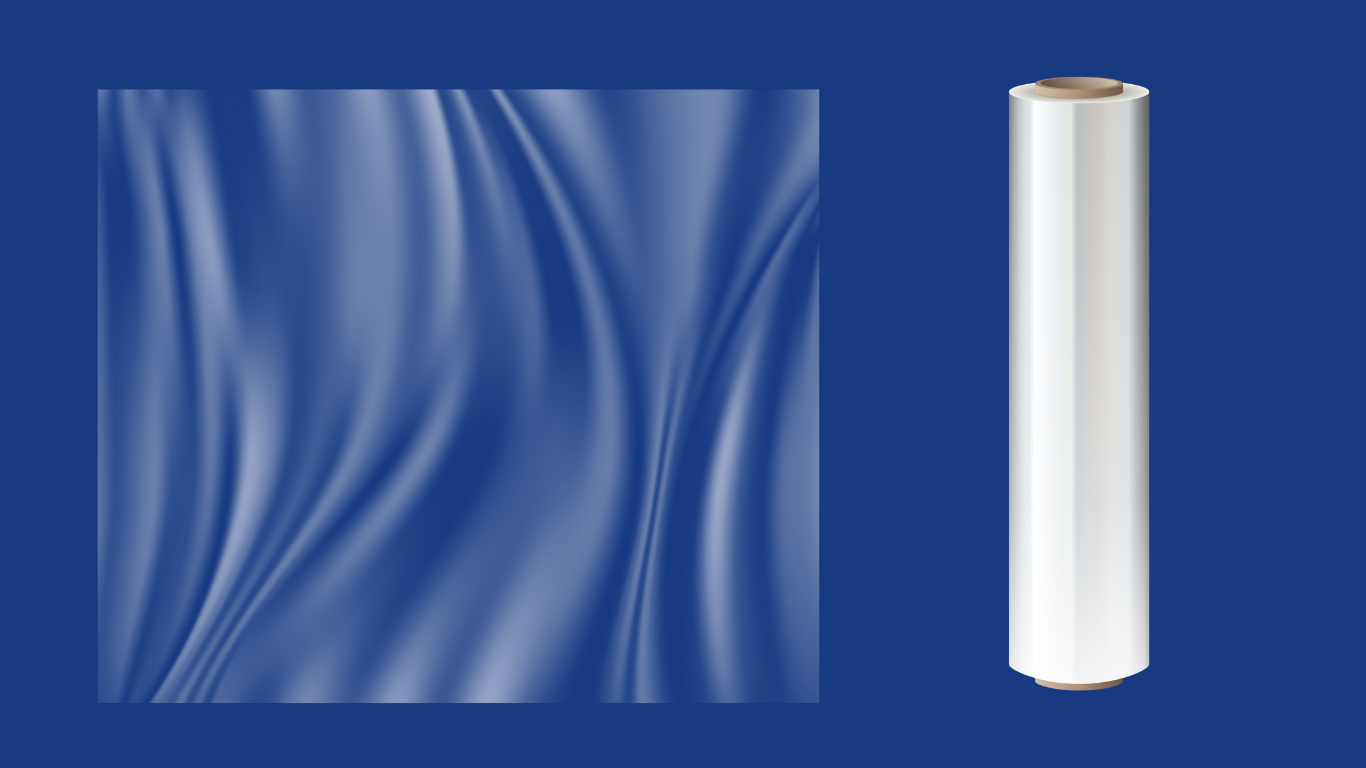When it comes to packaging and protecting goods for shipping, there are many different options available. Two of the most popular methods for securing items are Cast and Blown Stretch Wrap. But what exactly is the difference between them, and how do you decide which one is right for your needs? Let’s take a closer look at the benefits of each type of wrap to help you make the best decision.
What is stretch film?
Stretch wrap, also known as pallet wrap, is a highly stretchable plastic film that is used to secure boxes and items together on a pallet for transportation. Stretch wrap is available in different thicknesses and sizes, allowing it to be used for various applications. It is made from linear low-density polyethylene (LLDPE) and other resins that make it flexible yet strong enough to protect the items on a pallet from tampering, dust, moisture, and other environmental factors.
What is Cast Stretch Wrap?
 Cast stretch wrap, also known as cast film or cast stretch film, is a stretchable plastic film made using the cast extrusion process. This process involves melting LLDPE resins and then cooling them to create a thin film that can be stretched easily when applied to pallets or other items. Cast stretch wrap is highly elastic and provides superior tear resistance, allowing it to securely hold boxes and other items in place during transportation. It is also transparent, making it easy to check the items inside without having to open the wrap.
Cast stretch wrap, also known as cast film or cast stretch film, is a stretchable plastic film made using the cast extrusion process. This process involves melting LLDPE resins and then cooling them to create a thin film that can be stretched easily when applied to pallets or other items. Cast stretch wrap is highly elastic and provides superior tear resistance, allowing it to securely hold boxes and other items in place during transportation. It is also transparent, making it easy to check the items inside without having to open the wrap.
What is Blown Stretch Wrap?
 Blown stretch wrap, also known as blown film or blown stretch film, is a plastic film made using the blown extrusion process. This process involves melting LLDPE resins and then cooling them to create a thicker film that can be stretched farther than the cast film. Blown stretch wrap is also highly elastic and provides superior tear resistance, making it perfect for securely holding large boxes or heavy items in place during transportation. It also offers more puncture resistance compared to cast film, which makes it an ideal choice for protecting pallets from any sharp objects such as nails or screws that could otherwise damage the items inside.
Blown stretch wrap, also known as blown film or blown stretch film, is a plastic film made using the blown extrusion process. This process involves melting LLDPE resins and then cooling them to create a thicker film that can be stretched farther than the cast film. Blown stretch wrap is also highly elastic and provides superior tear resistance, making it perfect for securely holding large boxes or heavy items in place during transportation. It also offers more puncture resistance compared to cast film, which makes it an ideal choice for protecting pallets from any sharp objects such as nails or screws that could otherwise damage the items inside.
How to Choose the Right Stretch Wrap
Choosing the right stretch wrap for your application depends on several factors, such as size and weight of the items being shipped, type of shipping container, destination, and storage environment. Cast stretch wrap is typically used for smaller boxes and lightweight items since it offers better protection against tampering but can provide less puncture resistance. Blown films are ideal for larger boxes or heavy items, as they offer more puncture resistance and can be stretched farther than cast film. Regardless of which type of stretch wrap you choose, always make sure that it is designed to withstand the shipping environment and secure your items safely during transportation.
Ultimately, the best way to determine which stretch wrap is right for your application is to consult with a packaging professional. With their experience and expertise, they can help you find the perfect solution that will keep your items safe during shipping and storage.
Benefits of Using Stretch Wrap
Stretch wrap offers many benefits to shippers and warehouse operators. It helps protect against tampering, dust, and moisture; prevents boxes from shifting during transit; and is cost-effective. Additionally, stretch wrap is easy to apply and can be recycled or reused in many cases.
The right type of stretch wrap can also give your store a more professional look by keeping goods neatly packaged and organized for display. Since it comes in a variety of colors and sizes, you have the freedom to choose the perfect wrap for your business.
No matter what type of stretch wrap you use, always make sure that it is designed specifically for your application and can provide the desired level of protection. By taking the time to choose the right wrap for your needs, you can be sure that your goods will stay safe during shipping and storage.
Similarities between blown and cast stretch film
Blown and cast stretch films are both commonly used for securing and protecting palletized loads during transportation and storage. Both types of stretch film offer excellent clarity, allowing for easy identification of the wrapped products. They also provide strong puncture resistance and load stability, ensuring that goods remain intact and secure. Additionally, blown and cast stretch films are both used in various industries, including food and beverage, pharmaceuticals, and manufacturing, due to their versatility and reliability.
Comparison: Blown vs Cast Stretch Film
Blown Stretch Film:
- Manufacturing Process: Created by blowing heated plastic into a bubble, then cooling it.
- Strength and Durability: High tear resistance and exceptional load-holding capabilities.
- Stretchability: Typically stretches up to 150-200%.
- Clarity: Lower clarity, making it harder to see through.
- Noise: Noisier when being unwound.
- Cost: Generally more expensive due to the complex manufacturing process.
- Usage: Ideal for heavy-duty applications and irregularly shaped loads.
Cast Stretch Film:
- Manufacturing Process: Produced by feeding heated resin through a flat die and then cooling it on large rollers.
- Strength and Durability: Less tear-resistant compared to blown film, but still effective for most applications.
- Stretchability: Can stretch up to 250-300%.
- Clarity: High clarity, making it easier to see through.
- Noise: Quieter when being unwound.
- Cost: Usually less expensive due to the simpler production method.
- Usage: Suitable for standard packaging needs and more uniform loads.
Applications – Cast and Blows Stretch Film
Cast Stretch Film
- Packaging: Ideal for securing goods on pallets, protecting products during transportation.
- Food Industry: Used for wrapping food items to preserve freshness and prevent contamination.
- Retail: Great for bundling products together for sale or display.
Blown Stretch Film
- Industrial Use: Suitable for heavy-duty applications due to its superior strength and puncture resistance.
- Agricultural: Used for wrapping silage, hay, and other agricultural products.
- Construction: Effective for covering and protecting building materials from dust and moisture.
Tilak Polypack: Your Partner in Packaging Solutions
At Tilak Polypack, we are committed to providing you with high-quality packaging solutions tailored to your needs. Whether you opt for cast or blown stretch wrap, you can trust us to deliver products that meet your requirements for security, durability, and cost-effectiveness. Contact us today to explore our range of pallet wrap options and make the right choice for your packaging needs.
Conclusion
Stretch wrap offers shippers and warehouse operators a cost-effective way to keep goods secure during shipping and storage. With the right type of stretch wrap, you can also give your store a more professional look by keeping goods neatly packaged and organized for display. No matter what type of stretch wrap you need, Tilak Polypack is here to provide you with quality packaging solutions that meet your specific requirements. Contact us today to learn more about our selection of stretch wrap options and find the perfect choice for you.
See how Tilak Polypack can help you get the best stretch wrap solutions for your business! Our team is here to provide you with quality products and services tailored to your needs. Get in touch today and let’s get started on finding the perfect solution for you.

